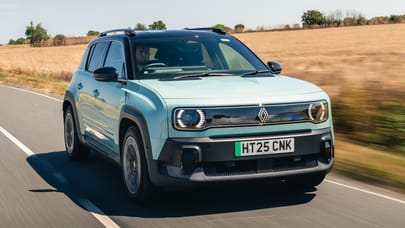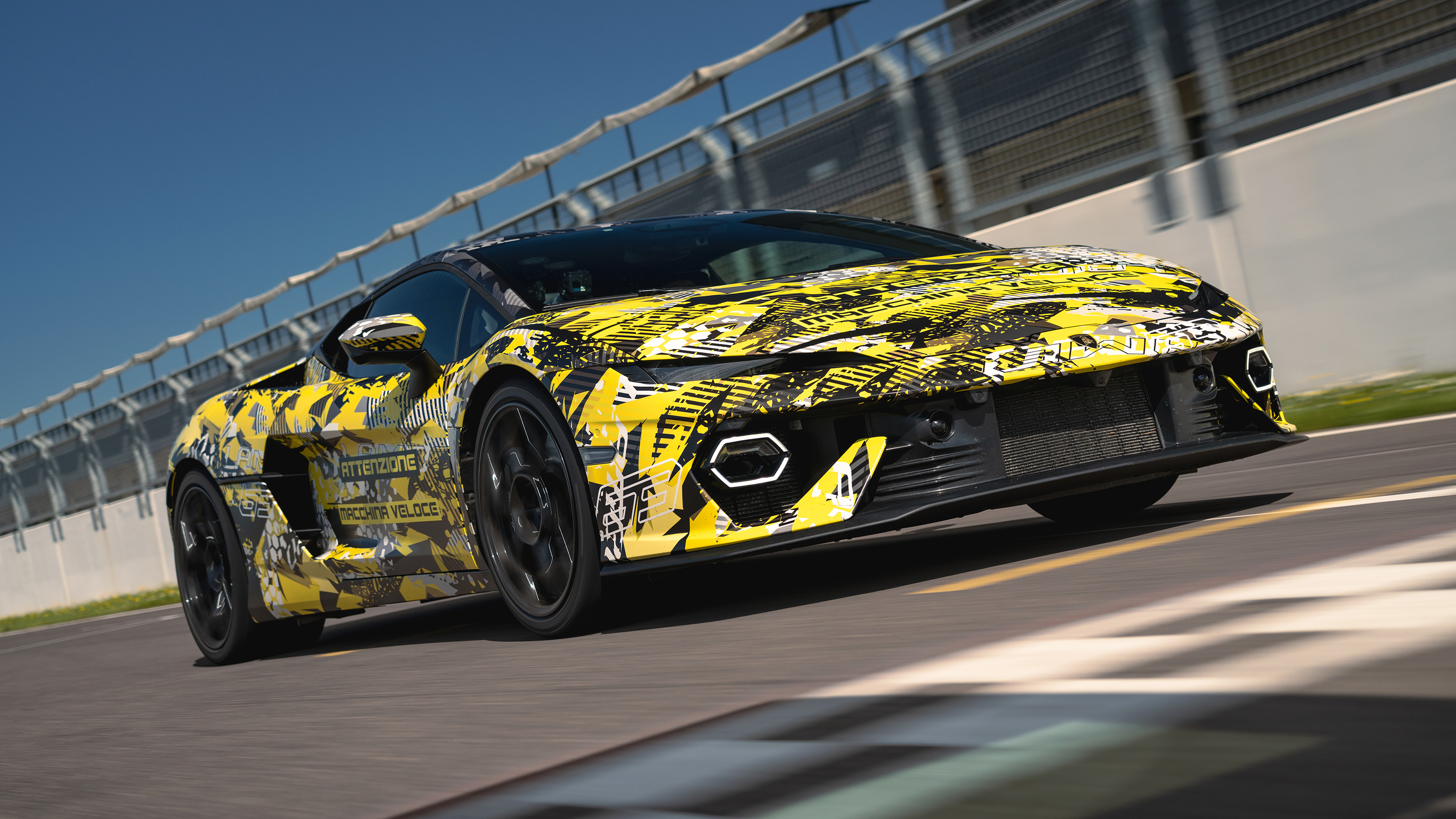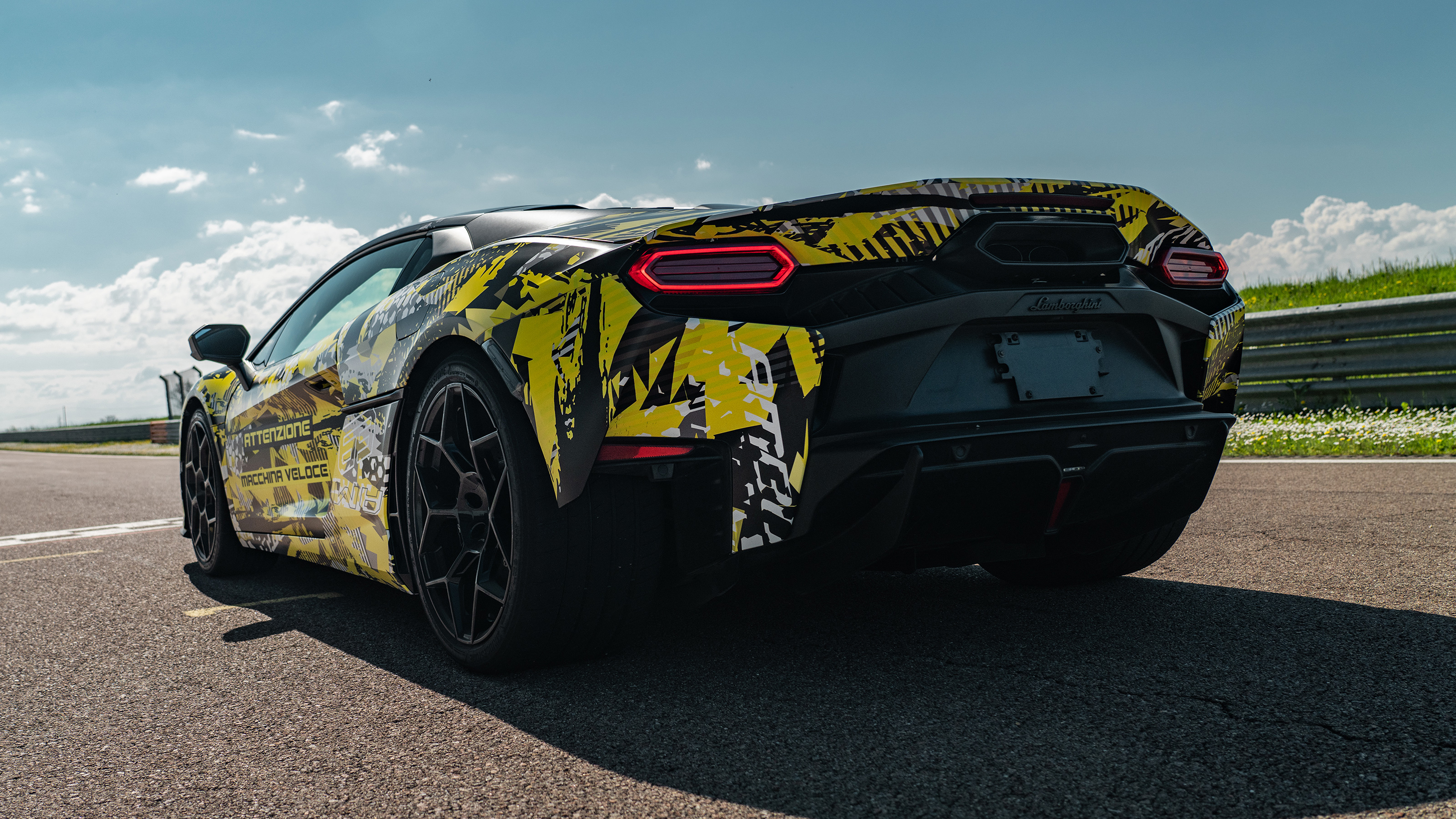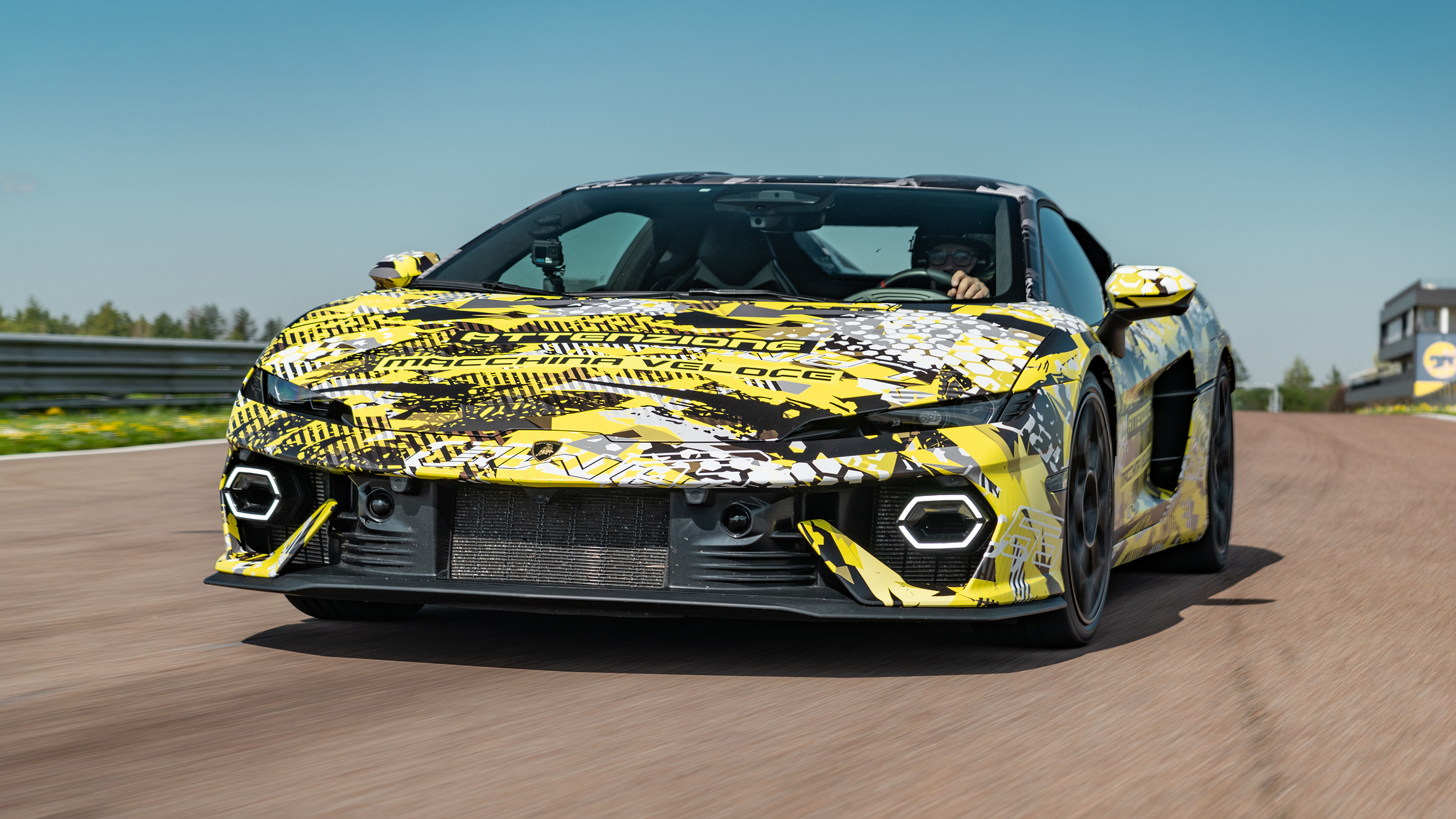
Lamborghini Temerario prototype review: does V8 hybrid power live up to the old V10?
You’re driving the new Lamborghini… already?
This is a late-stage development car, about 95 per cent finished according to Lamborghini’s boffin-in-chief, Rouven Mohr. So highly representative. The Temerario is the successor to the Huracán, a car that sold 29,700 units across its 10-year lifespan and is thus one of Lamborghini’s greatest hits.
It also reversed marketing orthodoxy by bowing out in perhaps its most entertaining iteration, the Sterrato. So some important questions need to be answered here. Can the all-new twin turbo hybridised V8 really match the outgoing V10? Is the Temerario too complicated for its own good? And is it a true Lamborghini?
C’mon then. Don’t keep us hanging… is that V8 a buzzkill?
Nope. It’s a monster. With a trio of e-motors to pump up torque at low revs and two socking great IHI turbos puffing away after that, the Temerario revs like few other cars, and certainly nothing in this sector. Lamborghini decided that 10,000rpm sounded cool and then realised it had to deliver on that. Well, it has.
Does it sound good?
It does, though subjectively not as good as the V10. Let’s just get that out of the way upfront. But the 4.0-litre V8 – an all-new unit, remember – has whipcrack throttle response, almost zero lag, and such an appetite for revs that pretty quickly it’s a case of V10 who?
How quickly you forget…
Full disclosure: the new unit is a bit guttural with its flat-plane crank spinning at low revs, but from about 4,000rpm on it starts screaming with a ferocity that could get a MotoGP rider nodding in recognition. Resist the urge to upshift at the usual increments and keep your foot in, then watch as you close in on 10,000rpm. It happens very quickly indeed and it just keeps on pulling. Imagine those piston speeds.
How does it handle? It sounds like you could get carried away.
It’s got you covered. On a dry track, this has to be one of the most benign mid-engined cars we’ve ever driven. Lamborghini’s engineers are still finalising the drift mode setting on a full ‘mu’ – high friction – surface, so we didn’t get to play with that, unfortunately. But in Corsa mode, with the powertrain in its Performance setting, all 907bhp is deployed to epic effect. Those two axial flux motors – they’re more torque dense than radial flux equivalents – on the front axle also provide torque vectoring, so the Temerario largely resists understeer.
Drive intelligently or with an eye on a quick lap time and it corners with pinpoint accuracy. Or you can keep it dancing on the limits of adhesion, its bespoke Bridgestone Potenza Sport rubber (255/35 upfront, 325/30 at the rear) working the surface beautifully. Arrive late, brake deep into the apex, or simply lob it in like a berk and it slides so sweetly you’d swear there’s some magic going on. And there is. It’s in all those electrons.
What else stands out?
We were limited to a track shakedown, so full road driving impressions will have to wait. But here goes. The eight-speed dual shift ’box is punchy and aggressive, in Corsa mode anyway. The steering is linear but a touch light for my personal taste. There’s terrific brake feel, the pedal action surprisingly short and firm. There are carbon ceramic discs, 410mm upfront with 10-piston calipers, and it stops faster than the Huracán STO. The electrified front axle and the rear e-motor also help decelerate the car, while also recharging the battery (as on the Revuelto).
The new chassis has 27 per cent greater torsional rigidity and downforce at the rear is up 103 per cent compared to the Huracán Evo, so the whole platform feels stable and robust. More importantly, the Temerario feels agile, lighter than its 1,690kg dry weight would suggest. At no point do the electrified elements get in the way of the process of going like the clappers. Everything feels harmonised. To be fair, it’s something that the Ferrari 296 GTB and McLaren Artura both manage. But they don’t rev to 10 grand. Significantly, it also has a character and feel that’s very distinct from the Revuelto.
Tell us more about the power unit.
The combustion engine first. It’s an all-new 4.0-litre ‘hot V’ V8, with a dry sump and a power output of 789bhp. That alone is 158 more than the punchiest Huracán. Highlights include that flat-plane crank, titanium conrods and race-bred sliding finger followers – made of ‘diamond like carbon’ – as well as two very boosty turbos (2.5 bar max). A new radiator layout helps cool all this hardware. There’s direct injection that works at a pressure of 350 bar, for faster, cleaner combustion. CO2 emissions are half those of the equivalent Huracán.
Top Gear
Newsletter
Thank you for subscribing to our newsletter. Look out for your regular round-up of news, reviews and offers in your inbox.
Get all the latest news, reviews and exclusives, direct to your inbox.
And the hybrid elements?
There are three electric motors, each producing 148bhp and 221 torques; two on the front axle, a third squeezed between the engine and transmission in what Lamborghini calls ‘P1’ position. There’s a 3.8kWh battery in the central tunnel; you can charge it at home in 30 minutes. The electrified front axle provides torque vectoring to tune the handling, as noted above; the rear one has a torque fill function.
The total system output is pegged at 907bhp, only 80 less than the Revuelto. Peak torque is 538lb ft. The top speed is 213mph, 0-62mph takes 2.7 seconds. 0-125mph is done in 7.3 seconds. You can chop another 25kg off the dry weight if you fork out for the track-oriented, carbon-fibred Alleggerita version. There is a lot to compute here.
Indeed. But don’t you need a track to get the full sonic overload?
It helps, for sure, but the Temerario has terrific driveability. The engineers have worked hard to tune the exhaust harmonics, and a physical sound tube pumps real noise into the cockpit. The flat plane crank configuration helps – it optimises the cylinder’s firing order, helps deliver more torque at low revs, and results in more ‘even’ exhaust pulses. Lambo has also designed the engine mounts and body to transmit extra vibrations, which get more pronounced the faster you go. It also changes note according to which drive mode you’re in, of which there are 13 combinations.
How do they work?
This is where the complication sets in. There are five main ones: Città, Strada, Sport, Corsa, and Corsa Plus (which switches off the DSC), as well as a separate Drift mode. That uses the front motors’ torque vectoring capability and cycles through three levels of slip intervention.
In City mode you can bimble around fully electrically in 2WD using the front axle, with about 187bhp. Strada is your everyday mode, with different amounts of power depending on whether you’ve selected Hybrid, Recharge (to top up the battery) or Performance. Sport gives you all 907bhp, as well as sharpening the engine note and suspension. In Corsa and Corsa Plus, you get all the power plus max torque vectoring and all-wheel drive.
Then there’s the drift mode, in three levels depending on how good you are at it. A message on the main instrument display even says ‘driver skills needed’. We’ll revisit that when we try the finished car later this year. But it still moves around very entertainingly even without it engaged.
How does the Temerario look in the flesh?
More subjectivity. Designing an all-new Lamborghini is a pressure job, and everyone has their opinion. Judge for yourself, although we’d say it’s more striking in the flesh than in images. We also reckon it’s worth starting at the back and working forwards. It’s the business end, after all, and the rear three-quarters is the Temerario’s best angle. Check out the amount of rear tyre that’s visible. The engine is partly exposed, less so than on the Revuelto, but still visible. The aim, says design boss Mitja Borkert, is to differentiate the new car from the Revuelto. The new car gets slender horizontal headlights compared to the other’s vertical Y-shaped ones.
Presumably there’s also a lot of aero going on here, too.
The channels in the roof direct air to the integrated rear wing, and inlets at the side funnel air to the engine, radiator and turbos. There are hexagon motifs in the tail lights and exhaust. But not on the diffuser, which is also highly visible, possibly a bit too much. There are vortex generators underneath, and three pairs of fins that spread out like branches of a tree and help tidy up the airflow underneath.
Is it dramatic enough, though?
Depends on how visually loud you like your mid-engined Italian super sports cars. You can always turn up the volume with one of the 400-plus paint colours (including no fewer than 32 different shades of white). The overhangs are compact and the front wings crest evocatively. It’s expertly done if not radical. And there are plenty of cool details. The daytime running lights (DRLs) incorporate the radar sensor as well as an air tunnel. And there are apertures under the lights to cool the brakes. The aero team and the design guys all seemed to get on. Put it this way, you will not be disappointed the first time one blasts past you on the motorway. Particularly at night.
It looks bigger than the Huracán. Is there more room inside?
It is, there is, and it does actually matter. The wheelbase is 40mm longer, and ingress and egress are easier. Headroom is increased by 34mm, legroom by 46mm, so you’re less likely to bang your head if you’re wearing a helmet. There’s also a decent-sized frunk, despite the presence of those two e-motors. You sit low in the driver’s seat to the extent that the Temerario feels like a car that you ‘wear’.
The interior architecture evolves the Revuelto set-up and it’s fully digital. The steering wheel is festooned with buttons but they have a positive, high quality haptic, and using them is natural. Easier than in the 296 GTB and more interesting than the rather spartan Artura.
Talk us through it all.
The most significant one is the little red dial top left for the different driving modes, there’s one for the ‘lift’ function, buttons for the indicators, and a chequered flag one for ‘launch control’. The gearshift paddles are large and fixed to the column, so grabbing an up- or downchange is easy.
The main display is a 12.3in digital one, with new graphics that are a little busy perhaps, but easy enough to read. You can configure it so the map is full size or for dynamic info, or reduce it so that only essential info is displayed.
Is the central screen easy to use?
Infotainment is done via the central 8.4in display, with a group of hexagonal tiles. (Hexagons are everywhere.) There’s full connectivity, Apple CarPlay and Android Auto, clever telemetry if you’re a track day regular, and a new thing called the Lamborghini Vision Unit, which adds three hi-def cameras, including one called the ‘emotion camera’. That’s trained on the occupants.
The passenger also gets a display, and you can swipe apps off the centre console onto that display. If you and your passenger end up discussing tyre pressures you need to get out more often. There’s room behind the screen for a phone, keys and a wallet. Then there’s the start-stop button with the flip-up guard.
Understood. Remind us of the elevator pitch here.
That downsizing and electrification – from a majestic V10 to a hybrid V8 – is as much about turning up the performance as it is reducing emissions. Lamborghini prefers to say High Performance Electrified Vehicle instead of hybrid. Hybrid isn’t really a Lambo sort of word, although HPEV isn’t a word at all. Whatever you call it, the Temerario delivers – and then some.
Featured

Trending this week
- Car Review
BMW iX3






